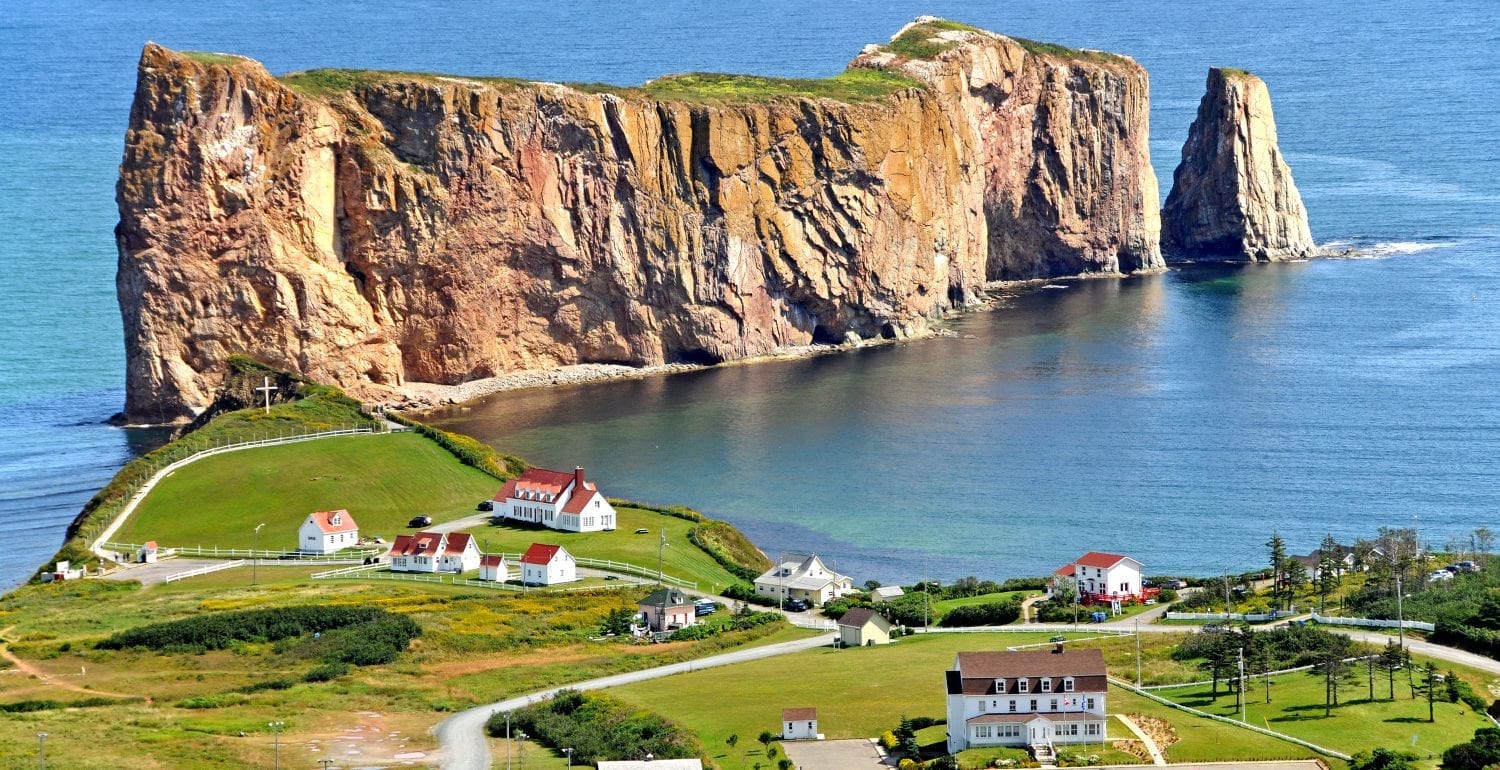Experience Percé!

Percé has been attracting travellers for centuries. Located at the tip of the Gaspé Peninsula, Percé Rock was an important fishing site visited by Basques, Bretons and Normans every summer starting in the 16th century. Two hundred years later, Percé was an important fishing station for the Anglo-Norman companies in the Gulf of St. Lawrence. Then tourism developed in the 20th century, and Percé became a popular destination. Its spectacular sheer rock formation with a giant hole, the colony of tens of thousands of northern gannets that nest on Île Bonaventure, the built heritage of the picturesque coastal village, the sea cruises and the cliffs surrounding the site all contribute to Percé’s unique charm. Percé was designated a heritage site by Quebec’s Ministère de la Culture et des Communications. Since the 1980s, the promotion of the historical, cultural and natural heritage of Parc national de l’Île-Bonaventure-et-du-Rocher-Percé and the development of the private tourist industry have added to and diversified the exceptional interest of this world-class site.
To learn more…
A breathtaking natural heritage
Nature’s extravagances at Percé are a sight to behold. From the north, atop the cliff overlooking the natural amphitheatre known as Percé, the entire village is visible, along with its crescent-shaped shore, Île Bonaventure in the distance and Percé Rock, barely visible at the end of string of cliffs. From the south, the massive, sharply delineated copper-colour rock with its surprising round hole springs into view. Other wonders gradually appear: the Mont Sainte-Anne lookout high above the ground, the charming shoreline and the pink cliffs of Île Bonaventure, home to tens of thousands of northern gannets.
Officially opened in 2017, the Geopark looks at Percé from a different angle, with its glass platform 200 metres high, its zip line and Tektonik, its multimedia exhibition on the fascinating geological history of the region. A well-marked network of footpaths now allows visitors to explore the entire region from Percé to L’Anse-à-Beaufils, with its lookouts, waterfalls and grottoes. On Île Bonaventure, the most accessible colony of northern gannets in the world comprises 100,000 birds. At the park’s observation sites, naturalists interpret the behaviour of these elegant birds, almost close enough to touch, including their mating rituals and parenting behaviours. The largest colony of common guillemots in the Gulf of St. Lawrence also nests on Île Bonaventure, which is no longer inhabited by humans. Several trails provide access to the most beautiful and surprising spots on the island.
Promoting the historical heritage
The historic sector of Percé is within walking distance of the Percé wharf, from which visitors can embark on a cruise along the Rock and around Île Bonaventure, where they can stop for a few minutes or a few hours. The heart of this heritage site includes three Robin & Co. buildings restored to their original 19th-century appearance and open to the public. The first is an old cod and bait warehouse, which is now the reception and information station. The company’s old salt warehouse is now a gathering place where tour guides offer evening activities focusing on the flora and fauna of Île Bonaventure, fishermen’s daily life and local legends. The largest of the buildings is the Chafaud, a typical Anglo-Norman cod fishery warehouse painted white and red, where cod was unloaded for processing and salting, contains the Parc national l’Île-Bonaventure-et-du-Rocher-Percé discovery centre’s exhibition.
Other buildings associated with the golden age of the dried cod trade in the Gaspé can be found in the same area, including small fishermen’s houses built in the 19th and 20th centuries, and the old Robin & Co. cafeteria, which now houses the park’s administrative offices. Percé also has fine examples of luxury vacation homes dating back to the turn of the 20th century, including the American painter Frederick James’ villa, located directly across from Percé Rock.
There is also an interesting built heritage on Île Bonaventure, reflecting the time when nearly 200 people, mostly fishermen, resided on the island year round. The residence of the manager of Le Boutillier Brothers, built in the 19th century, houses an exhibition on the cod fishery. Tourists can also visit the residence of fisherman William Duval, which was recently restored according to the original plans and using the original techniques (1912). The Margaulx restaurant is set in an old Le Boutillier Brothers warehouse built in Paspébiac, then disassembled and reassembled on Île Bonaventure.
A few historical milestones
The Mi’kmaq were aware of the fish resources in the Percé region and took advantage of them long before the Europeans arrived.
At the time of New France, Percé was the principal French fishing station in the Gulf of St. Lawrence. Some 600 fishermen worked there at the busiest times. Twice, British troops destroyed the installations and drove the French fishermen away: in 1690, when Admiral Phips’s flotilla passed on its way to attack Quebec City, and in 1758, when General Wolfe’s forces gradually took control of the entire French colony.
In 1776, Jersey native Charles Robin established his company’s largest fishing station in Percé. In 1845, Jersey company Le Boutillier Brothers set up on Île Bonaventure. Percé was then one of the largest fishing centres in all of eastern Canada. That same year, part of the Rock collapsed, losing one of its two holes.
The first vacationers, mostly artists and members of the upper class, began visiting Percé in the late 19th century. These “tourists” arrived by sea until a railway was built in 1911, and a vehicular road in 1928.
Percé became a mass tourism destination after World War II (1939–1945), when a large number of families were able to purchase automobiles.
In 1973, the Quebec government declared Percé a natural protected area in an effort to preserve its unique features. In 1985, it created the 5.8-square-kilometre Parc national Île-de-Bonaventure-et-du-Rocher-Percé, which encompasses part of the village, Percé Rock and Île Bonaventure.





